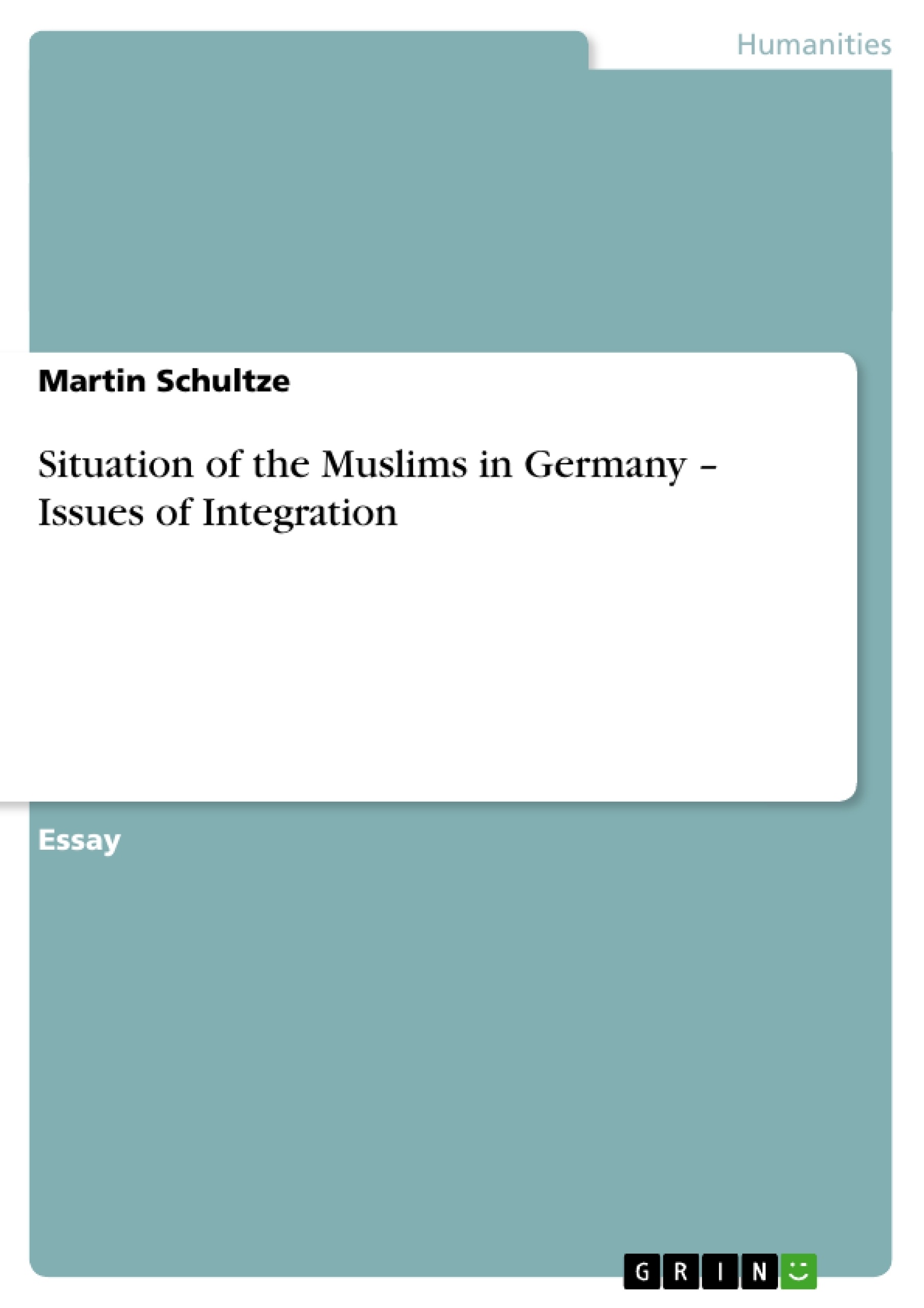In the following I will try to illustrate some of the specific problems of integration of Muslims and will raise up some questions for discussion. But before that, I will spend some words in general. The main problem why we haven’t face the integration as it came up was a wrong understanding in the Muslim people who came here. Currently there live 3.2 million Muslims in Germany mainly from turkey. They came here in the 60´s as guest workers. We have treated them as guests, we were not familiar with their religion, we have not try to integrate them in our society, we have let them do in the believe that they are just guests and that they will go back in their home countries sooner or later. And we had also prejudices
against Muslims that were even written down in for example a schoolbook from the late 70´s. Here is a quotation about the Islam from the book: “Allah is a violent and tyrannic god. Mohammed is uniquely tied to the evil: as a messenger of a violent god, he is violent himself, and so is Islamic man – violent, malicious, and driven by his instincts.” This quotation is hostile, ignorant, full of prejudices and wrong, but it was taught so in school and together with the public opinion it created frontiers and mistrust.
Nowadays we see that most of the people stay here and the first and second generation may feel that Germany is more there home as the country their parents or grandparents came from. Now we have the notion that these people are here and we must integrate them in our society without creating new frontiers and removing old prejudices. The main task – the first step - of the integration is that we must encourage the Muslims here to learn our language. At 9th of August this year there was a great fire in a residential house in
Berlin. Inhabitants mainly from Arabic countries couldn’t understand what the fire fighters told them. They said they should stay in their flats and don’t run in the hall, because of the fire
and the smoke. They didn’t understand these instructions so 8 people run out in their deaths. Surely a very drastically example of misunderstanding.
Inhaltsverzeichnis (Table of Contents)
- Situation of the Muslims in Germany - Issues of Integration
- Wearing a veil as a teacher
- Ritualise slaughter
- Exemption concerning participation in swim- and sport lessons for Muslim girls
- Islam lessons in German schools
Zielsetzung und Themenschwerpunkte (Objectives and Key Themes)
This text analyzes the integration of Muslims in Germany and specifically addresses four key issues: wearing a veil as a teacher, ritualized slaughter, exemptions for Muslim girls from mixed-gender swimming and sports lessons, and the introduction of Islam lessons in German schools. The author examines these topics through the lens of German law and the constitution, exploring the tensions between religious freedom and secularism, and the challenges of integrating a diverse religious community within a secular state. The text seeks to engage in a nuanced discussion, considering different perspectives and ultimately offering informed insights into the complexities of these issues.
- The challenges of integrating Muslims into German society
- The tension between religious freedom and secularism in Germany
- The role of education and language acquisition in integration
- The legal and societal implications of religious practices
- The challenges of representing Islamic communities in Germany
Zusammenfassung der Kapitel (Chapter Summaries)
The first chapter introduces the broader context of Muslim integration in Germany, highlighting the historical background of guest workers and the prejudices that have shaped public perceptions. The author emphasizes the importance of language acquisition as a fundamental step towards successful integration. The chapter then introduces the four specific issues that will be explored in detail throughout the text.
The second chapter examines the debate surrounding Muslim teachers wearing veils in schools. The author discusses the constitutional right to religious freedom alongside the principle of neutrality in public institutions. The chapter explores various perspectives on the veil as a symbol of religious identity and the potential for conflict between these values.
The third chapter focuses on the legal debate surrounding ritualized slaughter of animals. The author analyzes the Bundesverfassungsgericht's decision to permit slaughter without anaesthesia, contrasting the perspectives of those who see this as a step towards foreign infiltration and those who view it as a necessary measure for religious freedom and animal welfare.
The fourth chapter addresses the issue of exemptions for Muslim girls from mixed-gender swimming and sports lessons. The author considers the arguments put forward by Muslim parents who cite ethical and religious reasons for such exemptions. He then discusses the implications of granting such exemptions, exploring the potential for segregation and its impact on integration.
The fifth chapter examines the debate surrounding the introduction of Islam lessons in German schools. The author discusses the legal framework for religious instruction and the challenges of ensuring neutrality and appropriate content in a secular state. The chapter explores the role of Islamic associations and the complexities of establishing a representative body for Muslims in Germany.
Schlüsselwörter (Keywords)
The text focuses on key issues such as Muslim integration, secularism, religious freedom, religious symbols, ritualized slaughter, education, cultural identity, and the representation of Islamic communities in Germany. The author explores these topics through the lens of German law and constitution, examining the complexities of navigating these issues within a diverse and evolving society.
- Quote paper
- Martin Schultze (Author), 2005, Situation of the Muslims in Germany – Issues of Integration, Munich, GRIN Verlag, https://www.grin.com/document/128837



